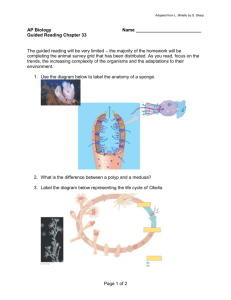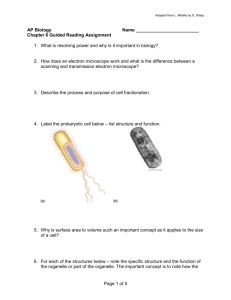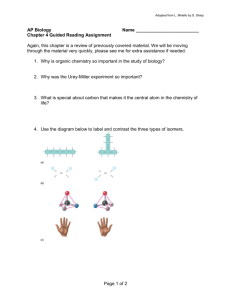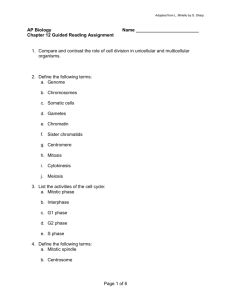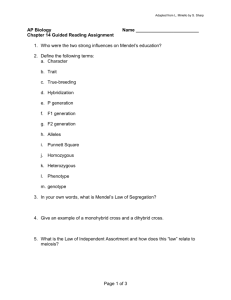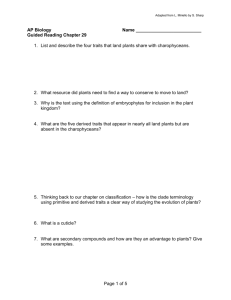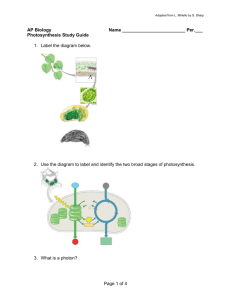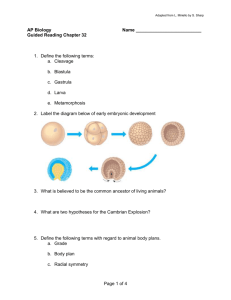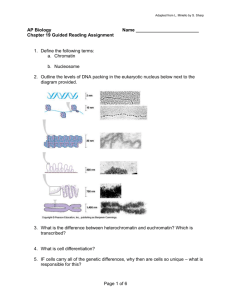Chapter 28 Guided Reading
advertisement
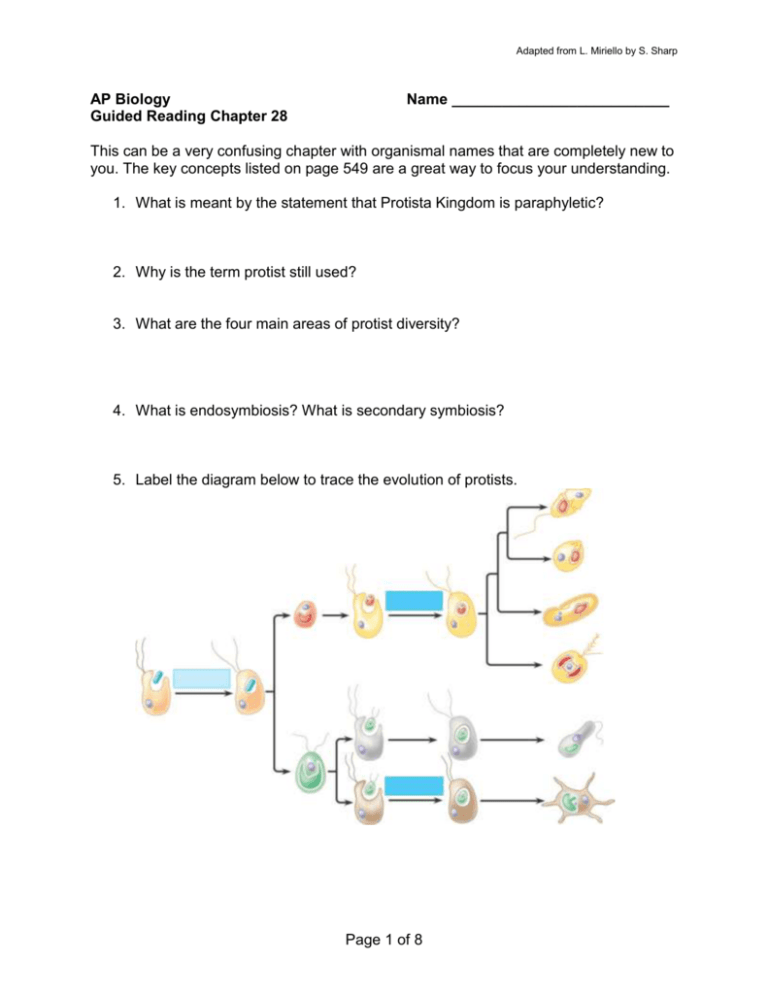
Adapted from L. Miriello by S. Sharp AP Biology Guided Reading Chapter 28 Name __________________________ This can be a very confusing chapter with organismal names that are completely new to you. The key concepts listed on page 549 are a great way to focus your understanding. 1. What is meant by the statement that Protista Kingdom is paraphyletic? 2. Why is the term protist still used? 3. What are the four main areas of protist diversity? 4. What is endosymbiosis? What is secondary symbiosis? 5. Label the diagram below to trace the evolution of protists. Page 1 of 8 Adapted from L. Miriello by S. Sharp 6. Do concept check 28.1 - #2 – check you answer and be able to explain. 7. What are the basic characteristics of diplomonads? 8. What are the basic characteristics of parabasalids? 9. What types of organisms are included in the Euglenozoans? 10. What human disease is associated with the kinetoplastids? 11. Label the diagram of the Euglenid below 12. What are the three groups of Alveolata? Page 2 of 8 Adapted from L. Miriello by S. Sharp 13. Label the diagram of Plasmodium – an apicomplexan 14. What are the Ciliates named for? 15. Label the two diagrams below concerning structure and function of Paramecium caudatum. Page 3 of 8 Adapted from L. Miriello by S. Sharp 16. What types of organisms are in the clade Stramenopila? 17. What are the differences between oomycetes and fungi? 18. Label the diagram below of the life cycle of a water mold. 19. What adaptation do Diatoms have against predation – how does physics play a role? 20. What are the general characteristics of golden algae? 21. Define the following term concerning algae: a. Thallus b. Holdfast c. Stipe Page 4 of 8 Adapted from L. Miriello by S. Sharp d. Blades 22. Are the structures above homologous or analogous to plant organs? Explain your choice. 23. What is meant by the term alternation of generations> 24. Label the diagram of the life cycle of Laminaria. 25. What does heteromorphic mean? 26. What are the general characteristics of Forams? 27. What are Radiolarians known for? Page 5 of 8 Adapted from L. Miriello by S. Sharp 28. What organisms are included in the Amoebozoans? 29. Label the following diagram of a plasmodial slime mold. 30. Label the following diagram of a cellular slime mold. 31. What is the difference between a plasmodial slime mold and a cellular slime mold? Page 6 of 8 Adapted from L. Miriello by S. Sharp 32. What are some of the general characteristics of red algae? 33. What are the two main divisions of green algae? 34. What were the three mechanisms that larger size and greater complexity evolved in the chlorophytes? 35. Label the life cycle below of the Chlamydomonas. Page 7 of 8 Adapted from L. Miriello by S. Sharp Page 8 of 8
